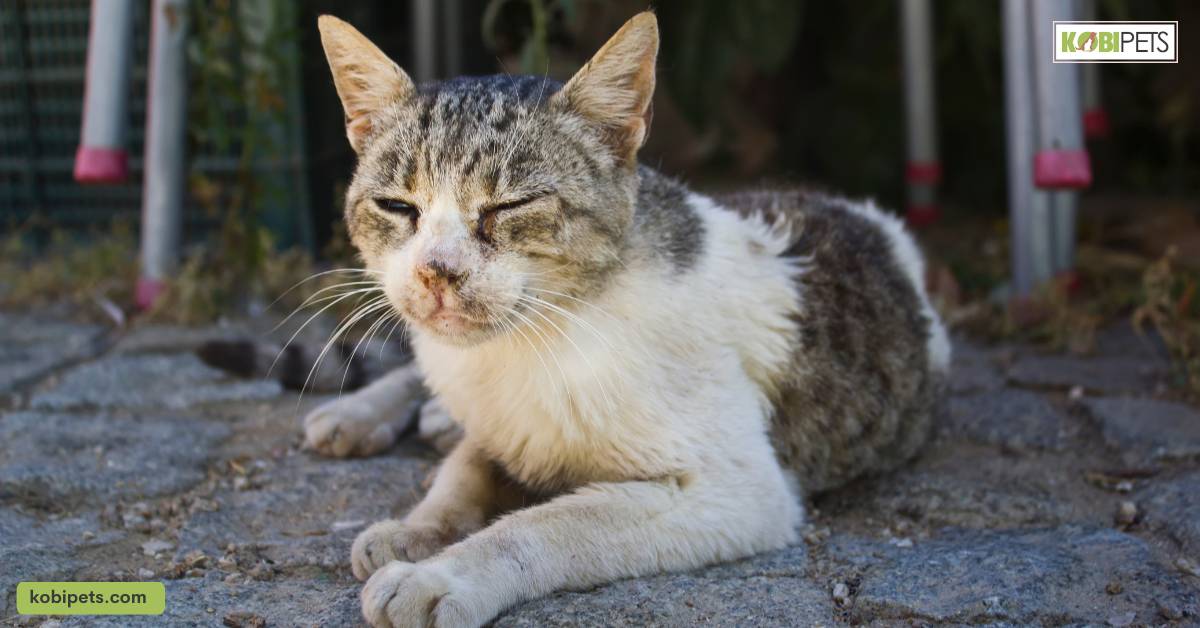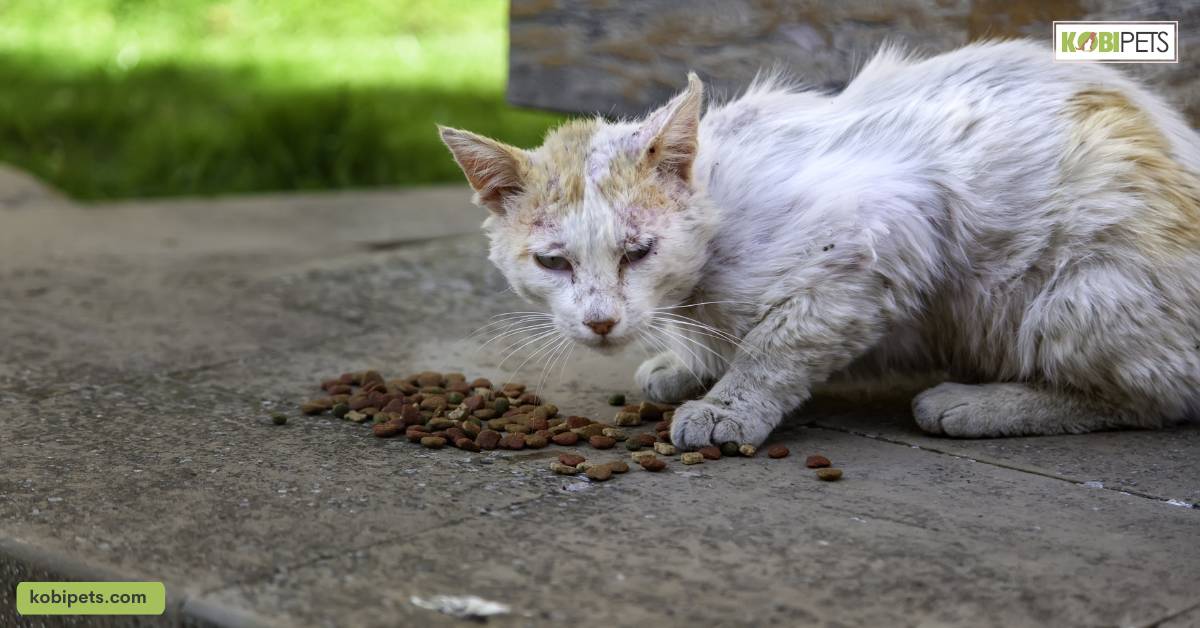As cat owners, it’s important to pay close attention to our fur babies and ensure they remain healthy. Unfortunately, our feline friends are susceptible to eye problems, which can lead to discomfort, pain, and even vision loss if left untreated.
Cats can experience eye problems such as conjunctivitis, corneal ulcers, cataracts, glaucoma, infections, retinal diseases, trauma, and uveitis. Knowing symptoms such as redness, cloudiness, discharge, and squinting can help you get prompt treatment and preserve your cat’s eyesight.
In this article, we’ll discuss the 8 most common eye problems in cats and how to spot them, so you can take action and get your cat the treatment they need as soon as possible.
1. Conjunctivitis
Conjunctivitis is one of the most prevalent eye problems found in cats. It is a condition that causes inflammation of the conjunctiva, the thin membrane that covers the inner surface of the eyelids and the whites of the eyes.
Conjunctivitis is usually caused by allergies, infections, or irritants, and can result in red, watery eyes, discharge, and sensitivity to light. As a cat owner, it is essential to watch for signs of Conjunctivitis and seek medical attention promptly, as it can quickly progress and lead to more severe eye problems.
2. Corneal Ulcers
Corneal ulcers are a common eye problem that can affect cats of all ages. These painful sores can be caused by a variety of factors including infection, injury, allergies, or even a foreign object getting lodged in the eye.
It’s important for cat owners to keep an eye out for any signs of discomfort or excessive squinting, as well as discharge and cloudiness in the affected eye.
If you suspect that your cat is suffering from a corneal ulcer, it’s essential to seek prompt veterinary attention to minimize the risk of complications and avoid potential long-term damage to the eye.
3. Cataracts
Cataracts are among the eight common eye problems that a cat can face, and it is crucial to identify them early enough to prevent further complications. This condition is characterized by cloudiness or opacity of the lens, which can be caused by a variety of factors including old age, injury, or genetics.
If left untreated, cataracts can lead to blindness, making it even more crucial to identify symptoms like cloudy eyes, changes in color or behavior, and increased clumsiness in your feline friend. Visiting a veterinarian and seeking prompt treatment can help improve your cat’s quality of life and prevent the further progression of the disease.
As a pet owner, monitoring your cat’s eyes and seeking early treatment for any unusual symptoms can go a long way in keeping your feline friend happy and healthy.
4. Glaucoma
Glaucoma is one of the eight common eye problems that cats can face. It is a condition in which there is an increase in the pressure within the eye, which can cause damage to the optic nerve and lead to vision loss.
Although it can affect cats of any age or breed, older cats are more prone to developing glaucoma. The symptoms of glaucoma can be subtle, but early detection is crucial in managing the condition and reducing the risk of permanent vision loss.
Regular eye exams and monitoring of your cat’s behavior can help in spotting the signs of glaucoma. If you suspect that your cat may have glaucoma or any other eye problem, it’s important to consult your veterinarian for proper diagnosis and treatment.
5. Eye Infections
As a cat owner, one of the most important aspects of caring for your furry friend is monitoring their eye health. Eye infections are a common problem that can affect cats of all ages and breeds.
Some signs your cat may have an eye infection include redness, discharge, squinting, and swelling. It’s important to take your cat to the veterinarian if you suspect they have an eye infection, as it can lead to serious complications if left untreated.
Your vet may prescribe eye drops, ointments, or antibiotics to clear up the infection and prevent it from recurring.
Keeping your cat’s eyes clean and monitoring any changes in their behavior can go a long way in identifying and treating eye infections early on.
6. Retinal Diseases
Retinal Diseases are a serious concern in cats, affecting not only their vision but also their overall health. A variety of conditions can lead to retinal diseases, such as hypertension, hyperthyroidism, and diabetes.
The symptoms of retinal diseases may include squinting, dilated pupils, and even blindness in some cases. To spot these issues in your feline friend, it’s important to schedule regular check-ups with your vet and be mindful of any changes in their behavior or habits.
Catching and treating retinal diseases early can help to preserve your cat’s sight and prevent any potentially serious complications down the road.
7. Trauma to the Eye
Trauma to the eye is one of the most concerning eye problems that a cat can experience. It can be caused by a variety of incidents, such as scratches or foreign objects entering the eye.
If left untreated, trauma to the eye can lead to serious issues such as vision loss or even the loss of the eye itself. As a responsible cat owner, it’s important to be on the lookout for any symptoms of eye trauma, such as redness, discharge, or an increase in blinking.
If you suspect that your furry friend has suffered from trauma to their eye, it’s crucial to seek veterinary attention immediately to mitigate any potential complications.
8. Feline Uveitis
Feline uveitis may be a lesser-known eye problem in cats, but it is no less serious than the others. This condition refers to inflammation of the uvea, the part of the eye that contains the iris, ciliary body, and choroid.
It can be caused by a variety of factors such as infection, injury, or autoimmune disease. Prevention and early detection are key, as prolonged inflammation can lead to blindness.
Keep an eye out for symptoms such as redness, cloudiness, or excessive tearing, and consult a veterinarian as soon as possible if you suspect your cat may be suffering from uveitis.
In conclusion
Recognizing potential eye problems in your furry companion is crucial in ensuring their overall well-being. As pet owners, it is our responsibility to be vigilant and knowledgeable so we can spot any issues early on. From conjunctivitis to glaucoma, there are several common issues that cats may face. While some symptoms may seem minor, it is important to take them seriously and seek proper veterinary care.














